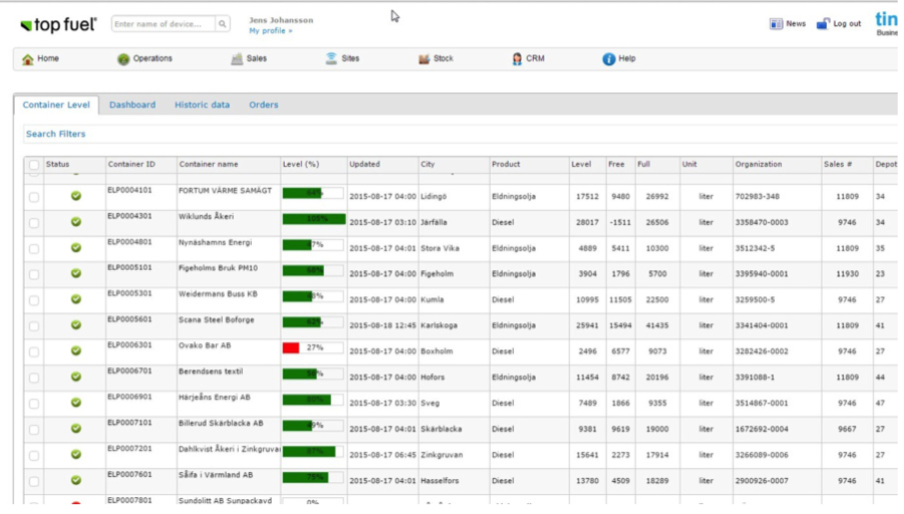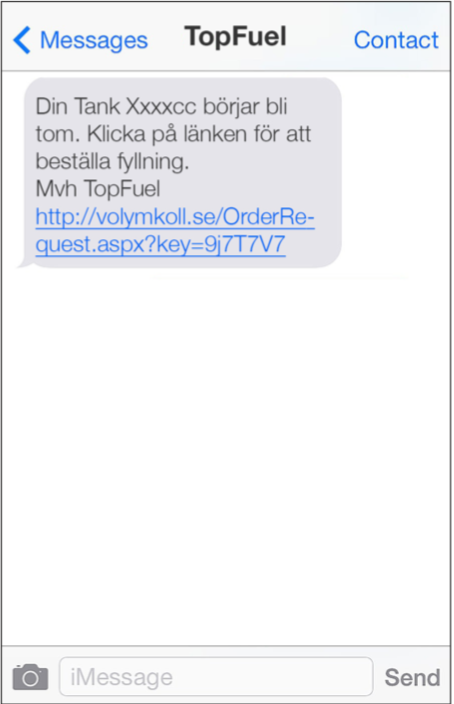


In theory, it may seem easy to profit from replenishing tanks so that other vehicles and machines can easily and continuously access fuel. When the fuel is running low, you will be contacted and all that needs to be done is to send out a truck and an invoice.
Easily done, but not easy to profit from, as there are many potential points of error along the way.
Each minor error, isolated or grouped together, leads to complications which directly impact profitability and, in a worst case scenario, lead to unnecessary costs due to managing a number of emergency orders.
Our tank management system is especially developed to provide the services that are important while ensuring the most cost effective deliveries. The supplier sells a guarantee to make sure the tank will not run out, by always informing the client ahead of time when it is time to top-up. It is quick and easy to install and is available through a monthly subscription for each tank. This makes it easy to calculate how quickly the system pays off.
Our system increases the ability to carry out exact deliveries – with the highest profitability.
Our system is based on a local data collection unit, which wirelessly surveils the levels in the tanks. To minimise installation costs in areas that lack local energy supplies, there are battery driven units with an expected lifetime of 5 years. Alongside this systems’ role as a level data collector, it also works as a surveillance unit that alerts users if levels change at unexpected rates or moments. Consumption can therefore be more flexible as the system keeps an eye on the levels and necessary orders.
Transmission of data is adapted to only send information when necessary, which leads to lower operational costs. The system can equally be adapted for different types of transmitters or data sent to the central server, and is adapted to a collective management of standardised data. The server is managed like a cloud service, where administrators of supplies are provided with an overview of clients’ tank contents, and location, using our additional GPS function.

The above image demonstrates how the system works. The tank drivers can receive information through a smartphone app. Our system also provides statistics of completed deliveries. Additionally, the system can exchange information with other administrative systems used by the supplier, such as SAP type ERP-systems, and systems that schedule and optimise transport.
The system is designed for expansion during usage, where new tank measuring units can be dynamically added while the others remain operational. Cloud services also make the system less sensitive to malfunctions, and enables access via laptops from different areas and users. When a tank level sinks below the limit for order, the system can inform whoever is responsible for managing the tank levels. The system will at that point send a text message to the tank administrator with the following message:

By clicking the link the order volumes are automatically calculated and a delivery is scheduled. You can’t make it easier than that.